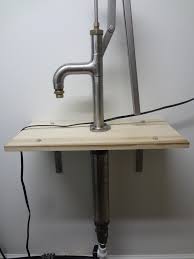
Breaking News
 Who Is ?@NickShirley?? | PBD Podcast | 710
Who Is ?@NickShirley?? | PBD Podcast | 710
 20 Cozy Ways to Celebrate New Year's Eve at Home
20 Cozy Ways to Celebrate New Year's Eve at Home
 The methylation switch: Scientists identify diet that can turn back the cellular clock
The methylation switch: Scientists identify diet that can turn back the cellular clock
 Americans are slaves for the wealthy elite's that write legislation along side corporations...
Americans are slaves for the wealthy elite's that write legislation along side corporations...
Top Tech News
 Laser weapons go mobile on US Army small vehicles
Laser weapons go mobile on US Army small vehicles
 EngineAI T800: Born to Disrupt! #EngineAI #robotics #newtechnology #newproduct
EngineAI T800: Born to Disrupt! #EngineAI #robotics #newtechnology #newproduct
 This Silicon Anode Breakthrough Could Mark A Turning Point For EV Batteries [Update]
This Silicon Anode Breakthrough Could Mark A Turning Point For EV Batteries [Update]
 Travel gadget promises to dry and iron your clothes – totally hands-free
Travel gadget promises to dry and iron your clothes – totally hands-free
 Perfect Aircrete, Kitchen Ingredients.
Perfect Aircrete, Kitchen Ingredients.
 Futuristic pixel-raising display lets you feel what's onscreen
Futuristic pixel-raising display lets you feel what's onscreen
 Cutting-Edge Facility Generates Pure Water and Hydrogen Fuel from Seawater for Mere Pennies
Cutting-Edge Facility Generates Pure Water and Hydrogen Fuel from Seawater for Mere Pennies
 This tiny dev board is packed with features for ambitious makers
This tiny dev board is packed with features for ambitious makers
 Scientists Discover Gel to Regrow Tooth Enamel
Scientists Discover Gel to Regrow Tooth Enamel
 Vitamin C and Dandelion Root Killing Cancer Cells -- as Former CDC Director Calls for COVID-19...
Vitamin C and Dandelion Root Killing Cancer Cells -- as Former CDC Director Calls for COVID-19...
A Portable and Easily Constructed Manual Water Pump Part 1, by G.G.

Finding water becomes the major problem faced by people in a survival situation. Go without water only a few days and death ensues. Storing water in the form of barrels is a logistical nightmare. They must be drained and refilled annually. Further, you only have as much water as you have stored.
Living in Idaho gives those of us who live here access to one of the world's largest aquifers. In fact, that body of water lies only 70 feet below my house. The problem I have is getting through the layers of hard pan, lava, gravel, and dirt that lie in between. Yes, I do have a well, but when TEOTWAWKI comes, there will be no electricity to bring that water to the surface. I guess you could say I am lucky water is only 70 feet down for me. Others in the Treasure Valley have to go down 400 feet or more to reach potable water. In order to access this water source, a portable, easily constructed manual pump is needed. (What follows is a mildly technical description of the principles employed by this pump. If this does not interest you, skip down to the assembly of the pump).
Technical Description of Manual Pump
Typical hand pumps can only pump water up from about 33 feet (14.7 psi or 1 atmosphere). Pumping water further than that pulls the dissolved air out of the water and creates bubbles. An example of this can be seen when a nurse draws medication out of a vial. Air always ends up in the syringe even though the needle remains submerged in the solution in the vial. This is due to the negative pressure being applied by the syringe. Where the air in the solution is dissolved at a higher pressure than what exists inside the syringe a natural gradient causes the dissolved gases to boil out. (This is also similar to what happens when a can of soda foams up. If the pressure outside of the open can was higher than the pressure with which the gas was dissolved in the soda, no fizzing would occur.)
So, the problem remains; how do we access water deeper than 33 feet? As I have thought about this, I kept thinking that electric pumps usually push water up from the bottom of the well, since most pumps are located at the bottom of the well, rather than pull the water up (unless special pump considerations are made). Furthermore, it is easy to conclude that a pump down at 400 feet needs to generate more pressure to push the water out than a pump at 70 feet does.



